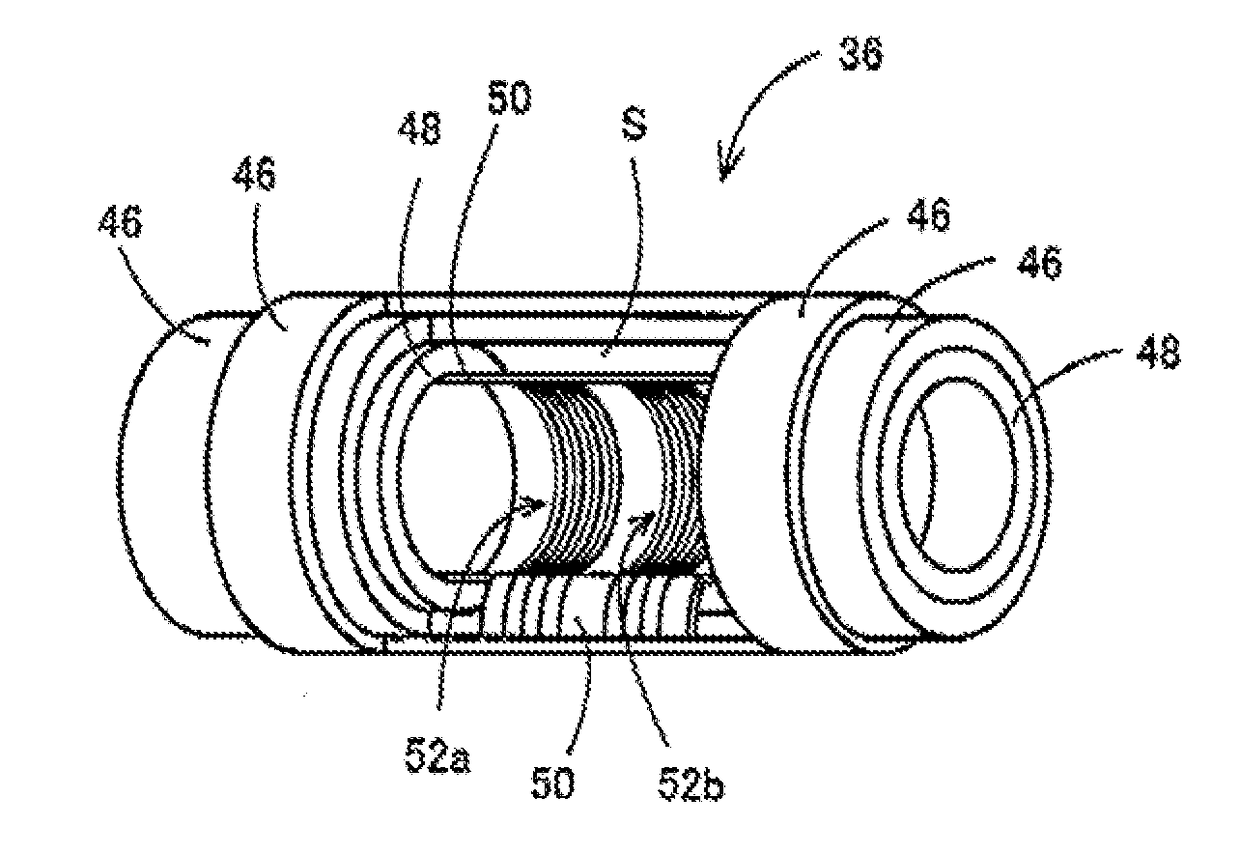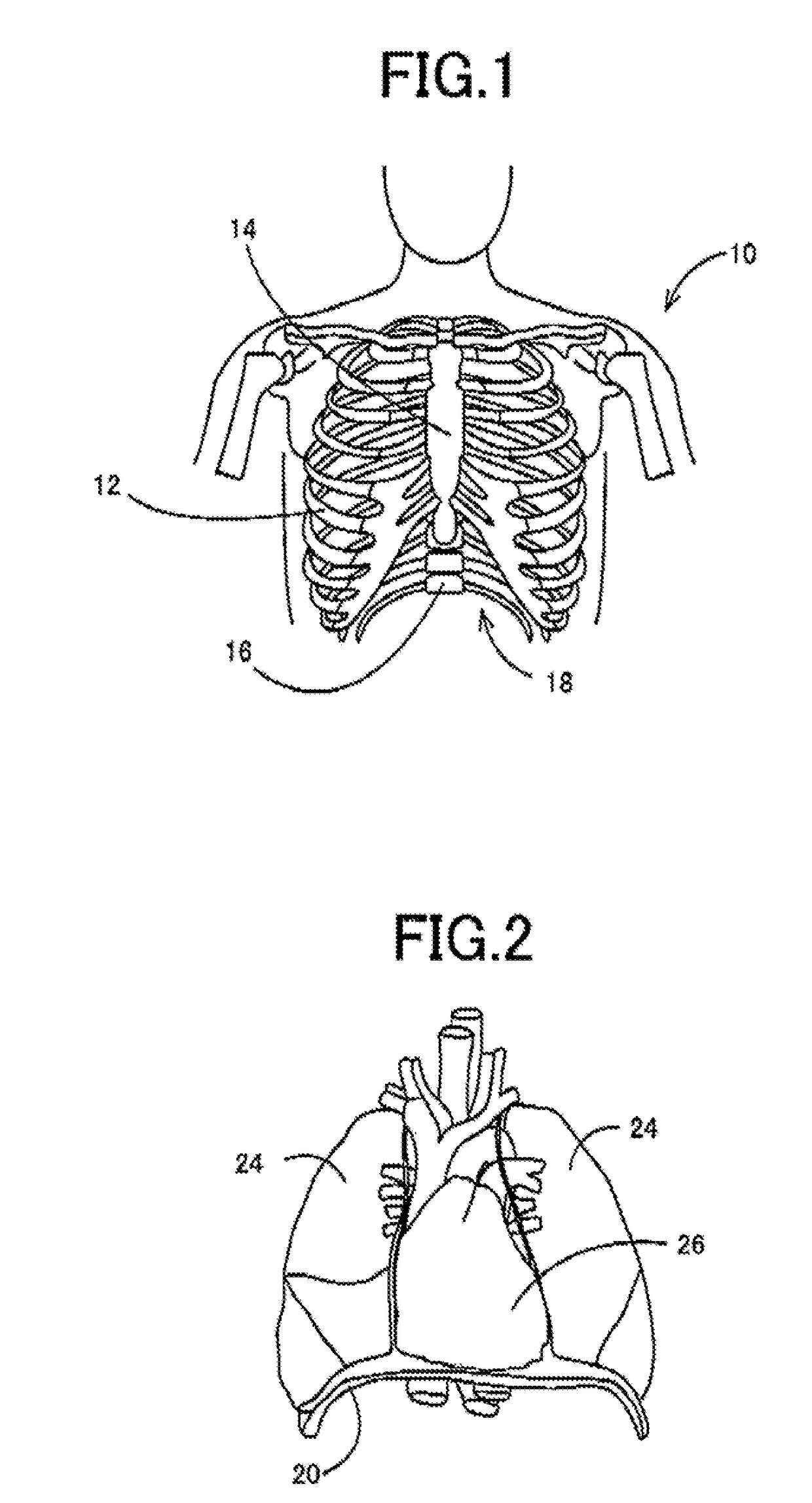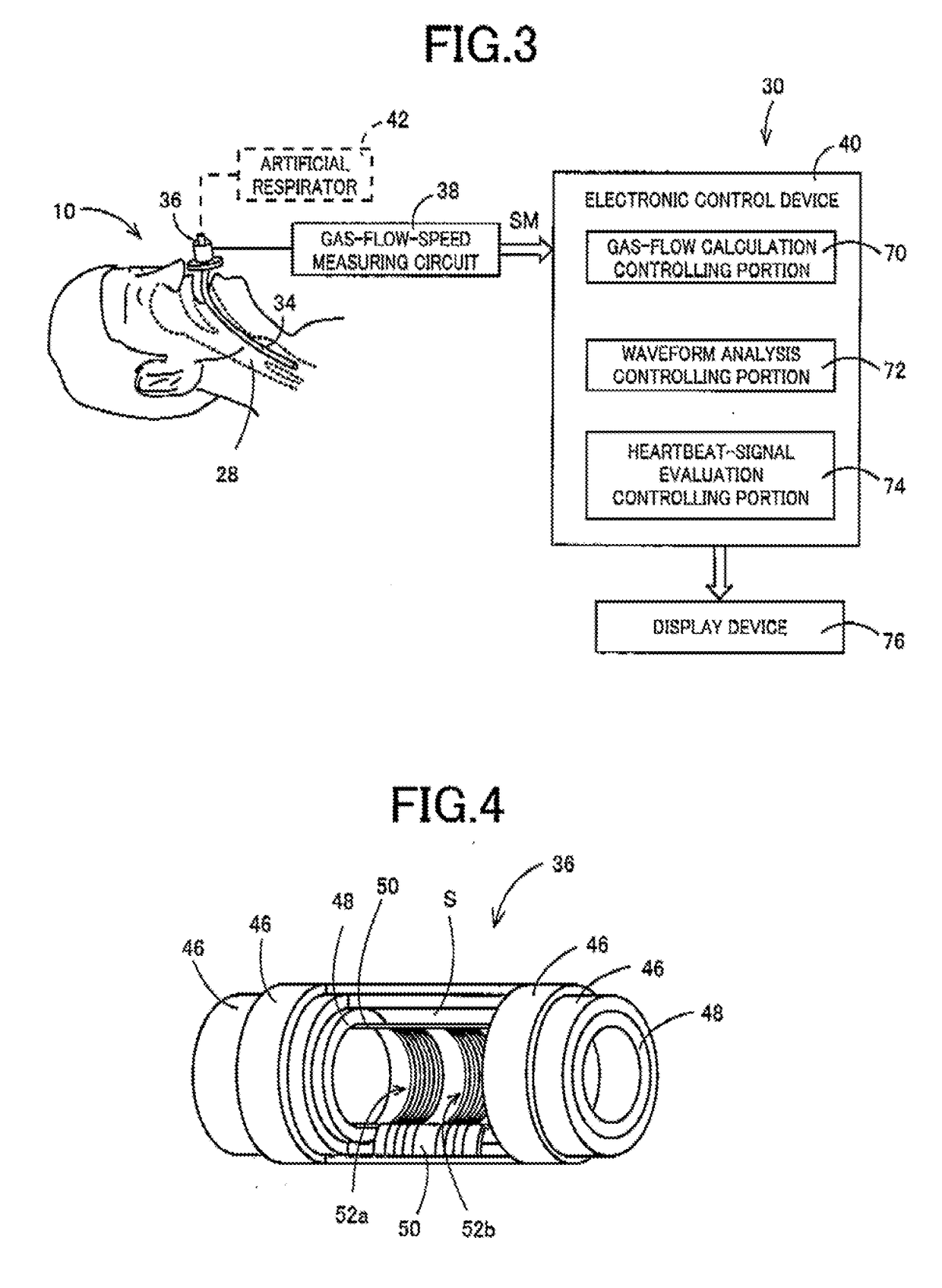Heartbeat-signal detecting device
a detection device and heartbeat technology, applied in the field of heartbeat signals, can solve the problems of inability to always consider reliable as heartbeat signals, difficult to make clinical evaluations of changes in circulatory system drugs, and difficulty in keeping ecg electrodes attached to the skin for a long time, etc., to achieve rapid medical treatment, improve reliability, and facilitate detection
- Summary
- Abstract
- Description
- Claims
- Application Information
AI Technical Summary
Benefits of technology
Problems solved by technology
Method used
Image
Examples
embodiment 1
[0067]As shown in FIGS. 1 and 2, in a living body 10, there are accommodated lungs 24 and a heart 26 within a thoracic cavity that is isolated by a thorax 18 having a relatively high rigidity and a thoracic diaphragm 20 closing a lower opening of the thorax 18, wherein the thorax 18 is surrounded by ribs 12, a sternum 14 and thoracic vertebrae 16. Although a volumetric change of the heart 26, which is caused by a pulse, is smaller than a volumetric change of the lungs 24, which is caused by a respiratory motion, the cycle of the volumetric change of the heart 26 is short so that the volumetric change of the heart 26 is clearly superimposed on the ventilatory waveform of the lungs 24. Therefore, attention was paid to a point that, if a respiratory waveform (ventilatory waveform), which represents a flow speed or flow rate of a gas passing through a trachea 28 of the living body 10, is detected, a heartbeat signal can be extracted from the detected respiratory waveform. Hereinafter, i...
embodiment 2
[0089]In the gas-flow sensor 36 in the above-described embodiment, the pair of heater elements 52a, 52b are provided. However, a single heater element may be provided, as shown in FIG. 13. In this case, although the direction of flow of air is not made clear, the gas-flow rate can be measured. FIG. 13 is a perspective view showing the gas-flow sensor 36 having the single heater element 52a, and corresponding to the view of FIG. 4. FIG. 14 is a view showing a resistance change characteristic TCR indicating a rate of change of resistance value of the heater element 52a in relation with temperature, wherein the indicated rate of change is a value relative to 100, which is a value when the temperature is 30° C. FIG. 15 is a view showing a circuit indicating a construction of a gas-flow rate measuring circuit for operating the gas-flow sensor 36 with the single heater element 52a, and corresponding to the view of FIG. 6. As shown in FIG. 15, the gas-flow-speed measuring circuit 38 includ...
embodiment 31
[0090]FIG. 16 shows an example in which a pair of detection resistor elements 53a, 53b are provided on respective opposite sides of the heater element 52a, wherein the detection resistor elements 53a, 53b are configured to measure the flow rate, based on change of the resistance value. In the gas-flow sensor 36 of the present embodiment, the detection resistor elements 53a, 53b are separated from the heater element 52a, so that an accuracy of measurement of the flow rate can be made higher than in the gas-flow sensor 36 having the single heater element 52a. In the present embodiment, for example, the measuring circuit shown in FIG. 6 is connected to the detection resistor elements 53a, 53b, and a heating control circuit is connected to the heater element 52a, for heating the heater element 52a to a constant temperature.
PUM
 Login to View More
Login to View More Abstract
Description
Claims
Application Information
 Login to View More
Login to View More - R&D
- Intellectual Property
- Life Sciences
- Materials
- Tech Scout
- Unparalleled Data Quality
- Higher Quality Content
- 60% Fewer Hallucinations
Browse by: Latest US Patents, China's latest patents, Technical Efficacy Thesaurus, Application Domain, Technology Topic, Popular Technical Reports.
© 2025 PatSnap. All rights reserved.Legal|Privacy policy|Modern Slavery Act Transparency Statement|Sitemap|About US| Contact US: help@patsnap.com



